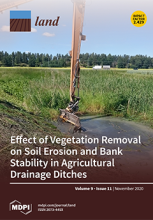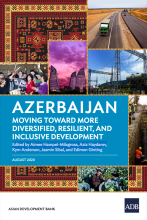/ library resources
Showing items 1 through 9 of 31.Green infrastructure (GI), as a concept and as a tool for environmental land-use planning at various scales, has burst onto the academic, political, and policy-making scenes in the last two decades.
This paper investigates how natural resource conditions impact the physical development of cities and how, once built, the urban spatial structure leads to different patterns of resource use.
Prior research has documented environmental and economic benefits of green stormwater infrastructure (GSI); literature on GSI social benefits is also becoming more prevalent among scholars around the world.
Green infrastructure is a strategically planned network of natural and semi-natural areas, including green and blue spaces and other ecosystems, designed and managed to deliver a wide range of ecosystem services at various scales.
The design of efficient Green Infrastructure —GI— systems is a key issue to achieve sustainable development city planning goals in the twenty-first century.
Blue-green infrastructure (BGI) is becoming a more popular means of dealing with climate change and climate change-related events. However, as the concept of BGI is relatively new, many urban and rural planners are unfamiliar with the barriers they may face during the lifecycle of a BGI project.
Since a century ago, there have been many efforts to attract foreign investment in Afghanistan.
As African cities expand so does the pressure to improve infrastructure and extend key public services for the growing urban populations. With limited tax receipts, local governments are struggling to finance new urban development or even maintain existing infrastructure.
Azerbaijan has set the course for the economy to reduce its dependence on oil by promoting new drivers of growth. This publication emphasizes the need for diversification, particularly in the agriculture, tourism, and manufacturing sectors.
Pagination
Land Library Search
Through our robust search engine, you can search for any item of the over 73,000 highly curated resources in the Land Library.
If you would like to find an overview of what is possible, feel free to peruse the Search Guide.





